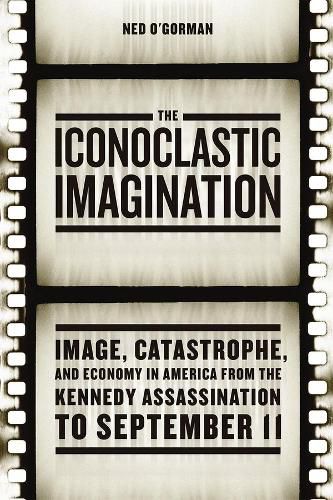Readings Newsletter
Become a Readings Member to make your shopping experience even easier.
Sign in or sign up for free!
You’re not far away from qualifying for FREE standard shipping within Australia
You’ve qualified for FREE standard shipping within Australia
The cart is loading…






Bloody, fiery spectacles-the Challenger disaster, 9/11, JFK’s assassination-have given us moments of catastrophe that make it easy to answer the where were you when question and shape our ways of seeing what came before and after. Why are these spectacles so packed with meaning?
In The Iconoclastic Imagination, Ned O'Gorman approaches each of these moments as an image of icon-destruction that give us distinct ways to imagine social existence in American life. He argues that the Cold War gave rise to crises in political, aesthetic, and political-aesthetic representations. Locating all of these crises within a neoliberal imaginary, O'Gorman explains that since the Kennedy assassination, the most powerful way to see America has been in the destruction of representative American symbols or icons. This, in turn, has profound implications for a neoliberal economy, social philosophy, and public policy. Richly interwoven with philosophical, theological, and rhetorical traditions, the book offers a new foundation for a complex and innovative approach to studying Cold War America, political theory, and visual culture.
$9.00 standard shipping within Australia
FREE standard shipping within Australia for orders over $100.00
Express & International shipping calculated at checkout
Bloody, fiery spectacles-the Challenger disaster, 9/11, JFK’s assassination-have given us moments of catastrophe that make it easy to answer the where were you when question and shape our ways of seeing what came before and after. Why are these spectacles so packed with meaning?
In The Iconoclastic Imagination, Ned O'Gorman approaches each of these moments as an image of icon-destruction that give us distinct ways to imagine social existence in American life. He argues that the Cold War gave rise to crises in political, aesthetic, and political-aesthetic representations. Locating all of these crises within a neoliberal imaginary, O'Gorman explains that since the Kennedy assassination, the most powerful way to see America has been in the destruction of representative American symbols or icons. This, in turn, has profound implications for a neoliberal economy, social philosophy, and public policy. Richly interwoven with philosophical, theological, and rhetorical traditions, the book offers a new foundation for a complex and innovative approach to studying Cold War America, political theory, and visual culture.